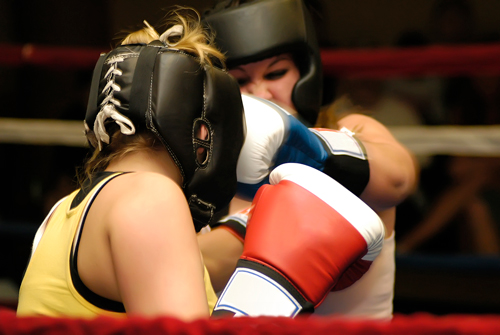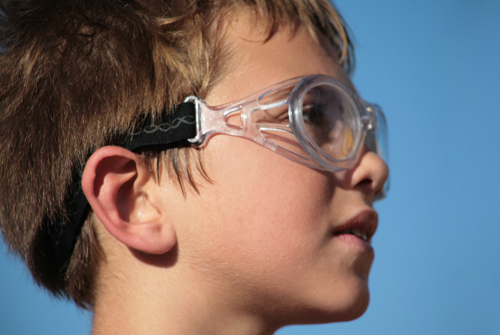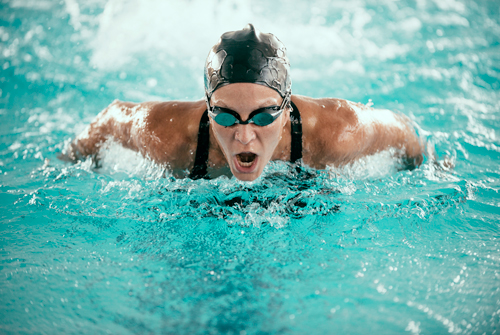By Linda Hardy, LDO-GA, CPOT, COA
All over the United States, kids are returning to school. The beginning of school is also the beginning of sports seasons. With any sport, there can be injuries. Eye injuries during sports are common and can be devastating. There are over 40,000 sports related eye injuries each year in the United States. Thirty percent of them are among children under age 17. Ninety percent of these eye injuries are preventable.
The American Medical Association classifies sports:
- Collision- football, hockey, lacrosse
- Contact- baseball, soccer, basketball, wrestling
- Noncontact- track, tennis, swimming
- Other- golf, bowling, field events
These classifications do not appropriately categorize the potential risk of eye injury during the sport. Instead, many doctors use categories of low risk, high risk and very high risk.
- Low risk indicates no use of a ball, bat, racquet, and no body contact.
- High risk involves use of a ball, puck, bat, stick, and includes body contact.
- Very high risk includes boxing, wrestling and martial arts.

Boxing is considered very high risk due to body contact and no protective eyewear.
Our Playing Position
A goal as an optometric/ophthalmic technician is to learn the needs of patients. Why do they need glasses and contacts? What type of protective eyewear do they wear during sport activities, if any? We also help transition the patient from doctor to optician by giving information about their unique needs. The technicians, opticians, and doctors all play a part in educating patients and their families about the need for protective eye wear, and possible injuries without the right protection. Then, if a patient sustains an eye injury, treating the injury and offering guidance to prevent future incidents.
Sports goggles have become very popular in the past few years. They come in a variety of shapes and sizes for young men and women. Some are designed to fit under helmets. The lenses are made from polycarbonate, which is impact resistant and has built in UV protection. Lenses can be tinted and made into sunglasses to alleviate photophobia. Most sport frames accommodate prescription or plano lenses. The frames are made from highly impact resistant plastic or polycarbonate materials, and come with padding to cushion the frame where it comes in contact with the head or nose area.
Sports sunglasses come with polycarbonate lenses, but are slightly wrapped to fit the face. They can be prescription or plano, and worn over contact lenses. The lenses can be tinted or made as polarized, and work well during daytime sporting events such as soccer, tennis, golf, and baseball.

Protective sports goggles are for all athletes, no matter the age or level of activity.
Swimming goggles are available in plano and prescription. Due to high pH values from chemicals in pools, without protection, eyes can become very red and irritated. Many children and young adults wear contacts. They should never be used for swimming. Contacts can fall out easily while swimming, and for patients who do not remove their contacts after swimming, there is high risk for an eye infection.

Swimming goggles can protect the eyes from irritation and help prevent eye infections caused by pool water.
If a patient is unfortunate enough to be injured during sports, it must be taken seriously. The optometric/ophthalmic technician needs to find the cause of the injury, when it happened, and triage the patient appropriately. Quick treatment could be vital to keeping good vision, especially with high contact sports. If there is a retinal or neurological injury, a quick referral is necessary. If treating for an abrasion or infection, make sure the patient is compliant with medication. Follow up care is required.
Endgame
No matter the age of the athlete, it is important to keep them well protected. As parents, we invest money in shoes and uniforms, bats and gloves. It is just as important to invest in protective eyewear. Educating patients and parents can be the chance to save someone from the pain of an injury and the life-long devastation of vision loss.













